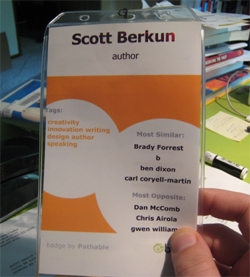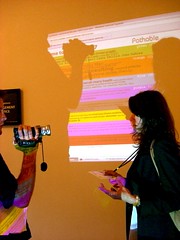 Everyone has an opinion on how long or short any particular book should be. It’s a fun, but futile argument, as there are too many variables, but authors and editors talk about it all the time. No one works for years on something hoping it’s a tome-like snorefest or that it leaves readers feeling ripped off. It’s subjective and every writer handles it differently. Like many decisions in writing it’s a gamble and there’s no magic answer.
Everyone has an opinion on how long or short any particular book should be. It’s a fun, but futile argument, as there are too many variables, but authors and editors talk about it all the time. No one works for years on something hoping it’s a tome-like snorefest or that it leaves readers feeling ripped off. It’s subjective and every writer handles it differently. Like many decisions in writing it’s a gamble and there’s no magic answer.
However, there are arguments! Yay! What would life be without things to argue about? Here are the two opinions I’ve heard most.
The minimalist argument, likely defended by Orwell, Hemingway and Vonnegut, is that concision is golden: tight prose is what great writers write. If you have the guts to stay bold, and revise ideas down to their core, you don’t need more than 250 pages to do damn near anything. Hemingway’s The Old Man and the sea, and Orwell’s 1984, run 130 and 330 pages respectively. In geek quarters, Brook’s original Mythical Man Month ran about 200 pages and Demarco’s Peopleware, 245. And, Strunk and White, practicing all that they preach, explain how to write in a scant 103 pages.
The exposition argument is that reading is pleasure and volume is value. Why not take the long road if it’s fun or educational? Steve McConnell’s Code complete (896), or Proust’s Remembrance of Things past all take this approach. If a book is intended to be an epic, or serve as a reference, the higher the page count the more usefulness it can provide.
The bigger problem, a ruse anyone who has written a research paper knows about, is that pages are fungible things. A page, depending on its physical size, font, leading, spacing, and margins, can range from 200 to 600 words, radically shifting the word count, the real measure of a book’s length. But only writers and editors count words – the rest of the world holds tight to physics, using page numbers or the width of a book to guess its length.
What the best books do
Like any designed thing, the best books match the author’s intentions with readers expectations. By crass example, a book titled “The 10 second way to organize your day” shouldn’t be 650 pages long, nor should a book billed as “the greatest epic literary adventure of the modern age” be a 20 page series of rhyming stick figure cartoons. Book back covers and prefaces try to match expectations, but usually backslide into marketing by claiming relevance to the largest audience possible.
What I did
My first book, The art of project management, came in at 453 pages, which was a shock. I intended to be comprehensive in spirit, like a secret handbook, but not a monster reference manual. The reason for the shock was inexperience: the template used during drafts had the count at 320, but conversion into print bumped the count (prompting us to trim like mad). For the 2nd printing the form factor (physical size) changed, dropping the count to 392. (Disclosure: I have written a long book).
For my second book, The myths of innovation, my proposal promised 320 pages. But on finishing the 2nd draft I felt I’d hit the aims of the book and provided a great read, in much fewer pages. I considered expanding topics, adding stories, and even great chapters that didn’t make the original outline (There were 20 or so myths). It would have been fun and a thrill to keep rolling with the piles of research I’d done. But like a good designer, I felt the best move was to let it stand. My editor agreed. Final page count, all in, 192. (Disclosure: I have written a short book).
Two books isn’t many, but the authors I’ve asked for opinions on this question haven’t gotten back to me yet – so you’re stuck with me.
How people buy books
The last variable is cost. Many people weigh the price of the book against its page count. They see a 300 page book that costs $30 and say “Hmmmm. That’s pricey. $1 for 10 pages.” Using volume as the primary guide to book value is the SuperSize approach to reading, but it’s easy.
Publishers know this and index their prices accordingly: they want page counts to jive with costs, especially for non-fiction books. But everyone knows the logic is flawed: if the writing is so boring that you never make it past page 50, what did you really pay for? Or if you make it through all 500 pages, but have no new motivations or ideas, did you get your money’s worth? Perhaps yes if you wanted 8 hours of reading time value, but perhaps not if you hoped to learn something.
I think $30 is a bargain for good ideas and opportunities to learn. Where else can you pay so little for such things? But I’m biased as I’m in the writing game. The $$$/page count measure is lame, but it’s easy, fast and we’re familiar with it. Se la ve.
In summary, I come in as a moderate minimalist. I think long books happen because:
1. The writer was unable to write well
2. The writer chose thoroughness over other things
3. The writer’s ideas were so gigantically original that 600+ pages were necessary (hmmm)
4. The editor was asleep
5. The writer was sleeping with the editor
6. The writer ran out of time
Assuming this post wasn’t too long for you, What do you think?
Yes I know it’s a ridiculous question with zillions of variables, but have some fun. How long should books be? And what effect does length have on whether you’ll buy one or not? Does your opinion change for fiction vs. non-fiction?





 Creativity: Flow and the psychology of discovery
Creativity: Flow and the psychology of discovery
 Everyone has an opinion on how long or short any particular book should be. It’s a fun, but futile argument, as there are too many variables, but authors and editors talk about it all the time. No one works for years on something hoping it’s a tome-like snorefest or that it leaves readers feeling ripped off. It’s subjective and every writer handles it differently. Like many decisions in writing it’s a gamble and there’s no magic answer.
Everyone has an opinion on how long or short any particular book should be. It’s a fun, but futile argument, as there are too many variables, but authors and editors talk about it all the time. No one works for years on something hoping it’s a tome-like snorefest or that it leaves readers feeling ripped off. It’s subjective and every writer handles it differently. Like many decisions in writing it’s a gamble and there’s no magic answer. 



